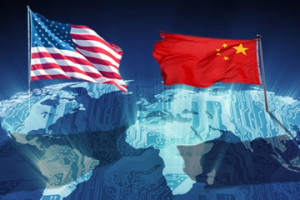
With the beginning of President Barack Obama’s second term, there have been attempts in the American foreign policy to “deceive” the bleak logic of the inevitable confrontation between the current global leader and the emerging new power. There are currently intensive discussions about the similarities between the situation presently forming in the Asia-Pacific and the one that was observed in Europe at the beginning of the 20th century. In denying this analogy, “optimists” primarily refer to the presence of international forums in the Asia-Pacific where, in principle, it is possible to discuss and resolve problems that arise between the various leading players in the region.
Furthermore, a serious factor that hinders the mutual distrust from spiralling out of control is the wide-reaching bilateral economic ties. In particular, the American-Chinese economic relations are sometimes characterised as being “mutually interdependent”.
Nevertheless, from the beginning of 2013, there have been several amendments to the American policies with respect to not only an older ally (Europeans) but the new geopolitical opponent as well. Washington started to send certain signals to Beijing that it would begin to somewhat ease up on its hard line policies towards China put forth by former state secretary Hillary Clinton. Thus, a month before the beginning of the new Obama administration, an article appeared in The New York Times, written by one of the masters of American political science Joseph Nye, with the noteworthy title of “Work With China, Don’t Contain It”.
In the spring of 2013, the Chinese navy was for the first time invited to participate in another round of RimPac international naval training (Rim Pacific), which will take place in the summer of 2014. The most significant of these “messages” to Beijing was sent in November of 2013 by the new Advisor to the President on issues of National Security Susan Rice. This message was concerned with inviting China to enter into the abovementioned TPP alliance, which initially had an anti-Chinese orientation.
However, this begs the question of whether the United States has the necessary freedom of movement in terms of Chinese policies? The question could also be: is Washington ready to sacrifice a system of bilateral allied relations that have been fostering in the Asia-Pacific since the beginning of the 1950s and which are one of the main American policies of containing China even today? The issue here is that the strength of these alliances depends on the reliability of the American commitments to its allies, who have growing fears about China’s transformation into a second superpower.
America’s allies now have reasons to doubt the ability and the desire of the United States to uphold its commitments to these countries before the beginning of another period of “flirting” between Washington and Beijing. These doubts are supported by the plans to limit Pentagon’s funding and the amount of combat aircraft carrier groups, the talks about retreating from the strategy of “global dominance” and moving towards one of “off-shore balance” and the unenthusiastic reaction to the Philippines’ calls for aid in defending several islands in the South China Sea from being overtaken by China.
Another issue that draws attention in this respect is the growing relations between Japan and India that began during the first term of Prime Minister Shinzo Abe (2006-2007). A milestone in this process became the Tokyo visit of Indian Prime Minister Manmohan Singh that took place at the end of May in 2013. The hastily growing relations between Japan and India are the result of both the countries’ fears regarding the consequences of turning China into another superpower and the apprehensions of being able to rely on the United States in the future. Alongside accelerating the process of “normalising” Japan itself, her strengthening relations with India need to be seen as a significant political trend in the Asia-Pacific.
***
In conclusion, it is important to emphasize that the influence of the hard liners on topics relating to the world overall and to China in particular is not decreasing in the American political establishment. They will be against this “pivot-shift” in American foreign policy which would endanger the U.S. strategical positions in the Asia-Pacific region that have taken decades to construct. The battle between the influential political groups of the leading global power, the ambiguity of Chinese foreign policy plans and the creation of new independent centres of power still ensures that there is a variety of scenarios available to describe the development of the situation in the Asia-Pacific region as well as in the entire world.
Vladimir Terekhov is a leading research assistant at the Centre for Asia and the Middle East of the Russian Institute of Strategic Research exclusively for the online magazine New Eastern Outlook.
